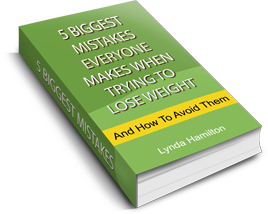A Dietitian’s Guide to Portion Proportion
Sydney dietitian Lynda Hamilton explains a sure-fire way to keep an eye on your portion proportion – and ensure you’re eating a balanced diet.

We all know that smaller portions help you lose weight, but are the proportions of the food groups on your dinner plate correct?
It is easy to be lured by a piece of steak that is as long as your forearm, or a big bowl of comforting pasta covered in a creamy carbonara sauce, but that is not what your body needs to function at its optimum.
I am not a big fan of calorie counting because I think it is easy to lose sight of what is important – and that is good nutrition through a healthy balanced diet which packs the body full of the nutrients it needs. If you are eating a healthy and balanced diet, the calorie counting will take care of itself. You will not need to lose weight, you will feel fantastic and be brimming with the energy you need to accomplish your goals.
So put away your calorie calculators and focus on what is important – and that is eating the correct quantity of the right food groups, also known as portion proportion.
Correct Portion Proportions
Food Group: Vegetables
Half your plate should be covered in either vegetables or salad.
Food Group: Protein
A quarter of your plate should be protein such as meat, fish or tofu. As a rough guide, your protein portion should be no larger than the palm of your hand, and as thick.
Food Group: Carbohydrates
Carbs are rice, pasta, bread, couscous or potato, and this is the food group many of us over-do. A single serving of carbohydrates should be roughly a quarter of your plate or the size of your clenched fist. As a dietitian, I often suggest people measure out their carbs initially, until they get used to the correct quantity. So, 1 cup of rice or pasta is one serving; 2 slices of medium sliced bread is 1 serving and a potato should be the size of your clenched fist, no larger.
Your hands are a fantastic guide to portion proportion because naturally, they are in proportion to your body. Shorter people have smaller hands and men, who need to eat more daily than women, naturally have larger hands. So use them as a guide when you are serving food.
And a quick word about sandwiches, many people’s lunch time staple. The same rules apply so grate cheese instead of cutting big slabs that fill the bread, and add as much salad as you can squeeze in.
If you would like to see a dietitian in Sydney, get in touch. Sydney dietitian Lynda Hamilton runs clinics in Mona Vale and Kogarah, and can arrange Saturday consultations for those who can’t get away from work during the week.






 Follow Us On Twitter
Follow Us On Twitter Like Us On Facebook
Like Us On Facebook Watch Us On YouTube
Watch Us On YouTube
Leave a Reply